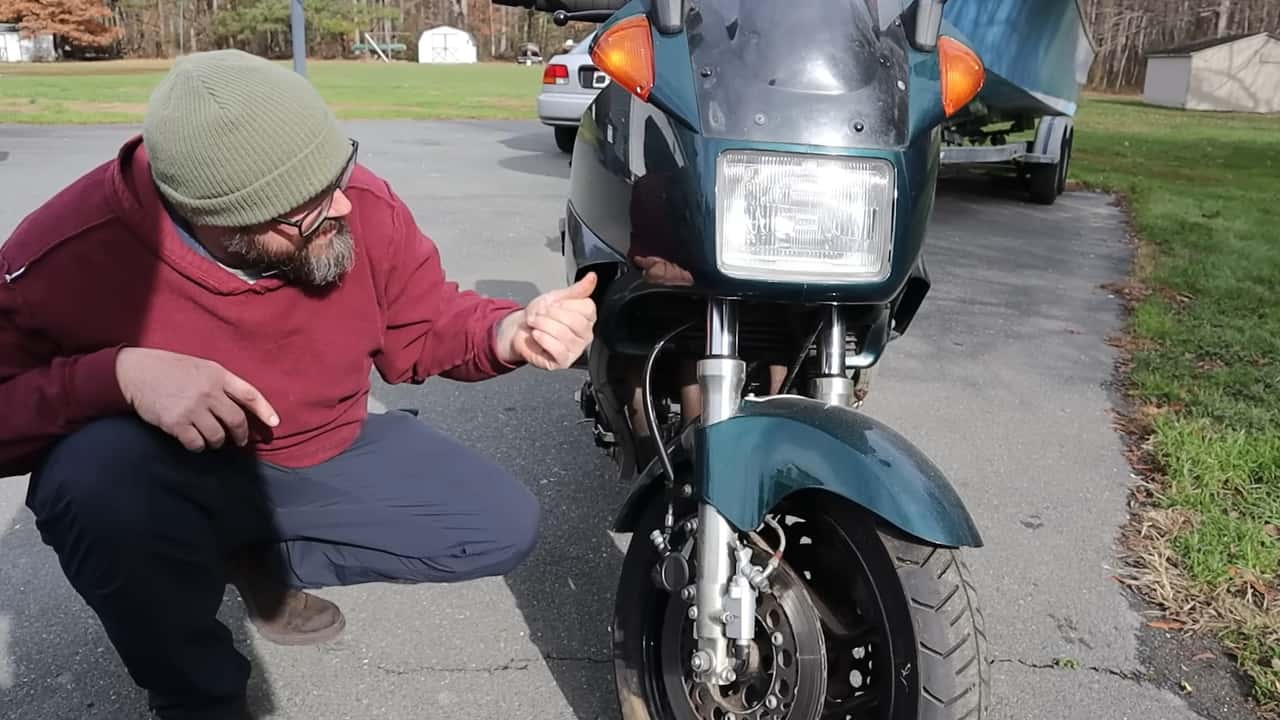There are two types of DIY-inclined riders: Those who've purchased and then subsequently ignored a project bike for an indeterminate length of time, and those who will take this action at some point in the future.
The specific reasons may differ. However, when they're boiled down to their essence, they all have the same root. Life just gets in the way sometimes. We're humans. It happens. Hopefully you won't beat yourself up too hard when it happens to you, because it happens to a lot of riders who start out with good intentions.
Then, maybe, you'll call up someone like the Bearded Mechanic to come take a look at your poor, abandoned bike. That's what the owner of this 1987 Yamaha FJ1200 did. You can tell by looking at it that it's been stored indoors for most (if not all) of its life.
Just look at the rich teal color and even finish of that paint. Do you see sun and weather damage? Me neither. It gets better the more you look around it, too. Windscreens this age tend to develop yellowing, crazing, and generally not look very nice. This one appears to be in pretty nice shape, though. The gauges look even better, with nary a cloud in sight.
That's all well and good, though, but it doesn't answer the key question: Will it run? The owner said they'd bought it to fix up and go along with their slightly newer FJ1200 (apparently the guy has a favorite model, like a lot of riders do). Then, unfortunately, they just never got around to it. Months turned into years, and before he knew it, there were 20 of them in between when the bike last ran and sometime in 2023.
Although there's a lot to admire on this nearly 40-year-old bike, there are some issues. There's rust in the gas tank, for one. It's not terrible, but it's not great.
Also, a closer inspection shows the entire carburetor bank to just not be on the bike. There's no airbox, which means that either it's somewhere else, or there's a pod filter that's somewhere else. There's an aftermarket Kerker exhaust (very period-correct) on it, so a pod filter setup is a complementary mod that would make sense.
A quick peek at some of the boxes sitting in amongst the other bikes in the garage reveals parts from this bike. The good news is, there's a pod filter. The even better news is, there's a set of carbs that are all together (not separated). Even more amazingly, they're beautifully clean.
Can starting it up really come so easily? Is it just a matter of installing the missing parts and then having the bike fire up? We won't spoil the ending for you. You'll have to watch and see what happens.
While you're looking at this bike, you can also appreciate the beautifully integrated front turn signals. No droopy plastic stalks here, thank you very much. You can also shake your head balefully at Japanese bikes of the era that insisted on using pain-in-the-butt 16-inch wheels (which give you not a whole lot of options for tires at present).
Alternatively, you can bliss yourself out contemplating the Yamaha anti-dive system on the front fork, and how it differs from other anti-dive systems of the era (which were all the rage). There's a lot to appreciate here, so we hope you enjoy it.


